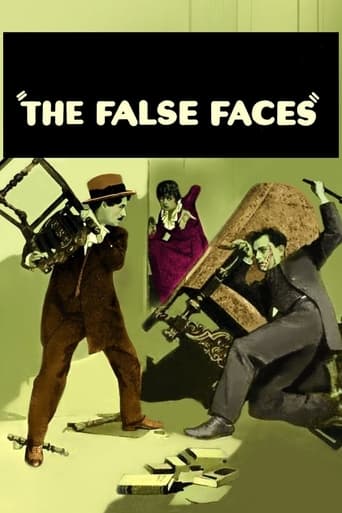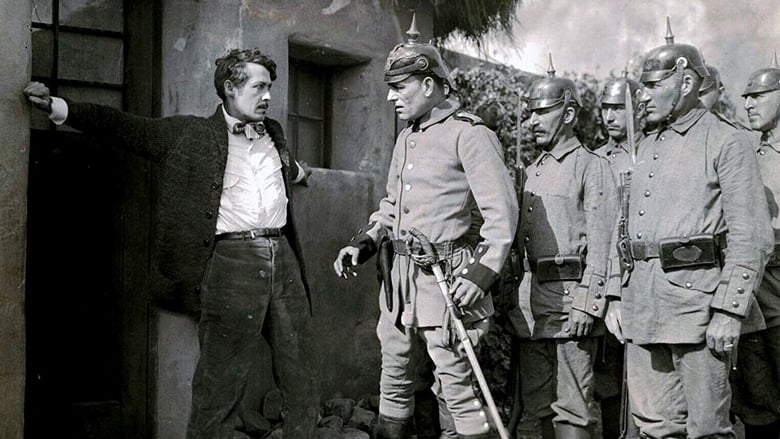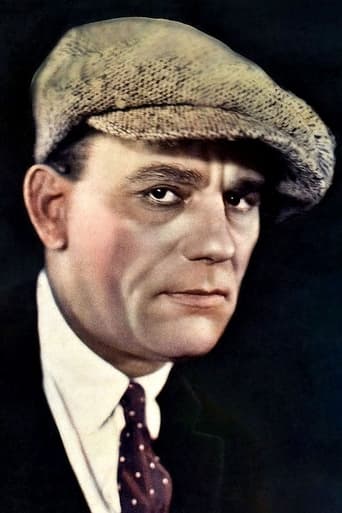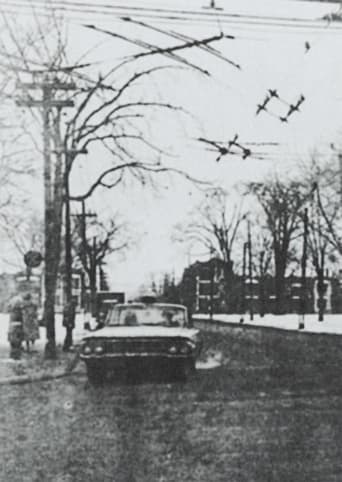

The False Faces (1919)
During World War I, a professional thief known as The Lone Wolf is assigned to steal a cylinder with important information from behind the German lines and bring it to Allied intelligence headquarters. However, German agents set out to stop him, headed by the man who was responsible for the death of the thief's sister.
Watch Trailer
Cast


Similar titles
Reviews
In False Faces, produced in 1918 but released the next year, the gentleman thief known as the "Lone Wolf" in the novels of Louis Joseph Vance switches genres from mystery to espionage. $3,500 was paid to Vance for the rights to the story, as producer Thomas Ince began a series from Vance novels, as I reveal in my Ince biography. False Faces has major scenes involving a submarine and the sinking of a passenger liner, recent events which had evoked so much popular concern and had been depicted in a very different manner in Civilization.After a title alongside the Kaiser's pointed helmet over a skull, the Lone Wolf is shown escaping German lines, across "no-man's land," into the safety of Allied territory. He requests to be taken to the commander, who turns out to be a former police adversary—but all, outlaw and lawman alike, are now united against the Boche. The Lone Wolf, whose real name is Michael Lanyard, had retired to live with his widowed sister and her child in Belgium, the very country to be the scene of many of the most widely-reported German atrocities. Ekstrom, like the Lone Wolf also a former thief, but one who is Prussian, hates Lanyard, and has his family murdered. Lanyard seeks vengeance on Ekstrom even as both men continue in their country's service, leading to their ultimate confrontation.During an interlude at sea, a disguised Ekstrom steals a cylinder entrusted to Lanyard by Cecilia Brooke. Their ship is torpedoed by a U-boat, and apparently only Lanyard survives, taken aboard by impersonating an officer of the Wilhelmstrasse. The drunken submarine commander was responsible for sinking the Lusitania. In a striking nightmare sequence, he is haunted by the faces of those his vessel has drowned, surrounding and imploring him for air. A Bavarian, the captain hates the equally besotted first mate, a Prussian, who shoots his captain when the U-boat is docked in a secret base off Martha's Vineyard.Teutonic menace reaches into the American heartland as the action switches to New York City. Cecilia survived, but believed Lanyard, whom she knew only as Andre Duchemin, drowned. Neither knew the other was a spy. Ekstrom, now operating out of the German embassy, has the secretary of the British consulate in his employ. Ekstrom abducts Cecilia, and Lanyard comes to her rescue, escaping so that Ekstrom's own men shoot him moments before they are seized by the American Secret Service. As the clouds of betrayal lift, Lanyard realizes he loves Cecilia and learns that a man he thought was her sweetheart was in fact her brother, also a spy. The duplicity caused by espionage, and the betrayal and cruelty of the Germans, finally comes to an end.False Faces is an exciting, involved film, patent propaganda but engaging for casting the slight Henry B. Walthall as the one-time thief. He triumphs in this war story by his quick wit, rather than brawn, and although he may gaze with nostalgic longing at jewels found when he opens a safe for a secret document, he overcomes the temptation; the war has made the Lone Wolf into a hero of the Allied cause. Today, False Faces is perhaps best known as an early Lon Chaney title, since he played Ekstrom, and is shown adopting a number of disguises, but the thematic and generic range of the movie deserve recognition as well. Later the same year, Ince associate J. Parker Read produced another film billed as a sequel, The Lone Wolf's Daughter (1919).
'False Faces' (there's no 'THE' in the film's title) is being marketed on video as a Lon Chaney movie. Buyer beware! Chaney plays a small role, having far less screen time than Henry Walthall and Mary Anderson. That wouldn't be bad if this were a good film. 'False Faces' LOOKS like a good film, possessing elaborately tinted colour sequences and some highly artistic intertitles, sometimes superimposed on live backgrounds. Many of these intertitles are so elaborate that they're difficult to read. (But we can clearly read the name of producer Thomas Ince in SIX different places in the credits: Ince was notorious for this shenanigan.) A far worse drawback is that this film has a plot which is both dull and extremely overwrought.'False Faces' exploits the events of the Great War, and the movie's sympathies are very clearly drawn. The war is characterised as 'the armies of civilization beating back the wolf-hordes of a blood-crazed king'. Hmm, guess which side is which. All the Americans are extremely virtuous and resourceful, and there's no mention at all of the British (whose B.E.F. Tommies had far higher casualties than America's doughboys, and who were in the war longer). All the Germans are sub-human 'Huns', as the intertitles cry them. Don't mistake me: I quite agree that the Allies were (and still are) the good guys, but I'm deeply annoyed at attempts to demonise villains like the Kaiser or Hitler or Osama bin Laden. It's a cheap easy tactic to depict such people as inhuman monsters, because we don't want to contemplate why human beings could be capable of such hideous acts.Henry Walthall, a very dull and stolid actor, plays American super-agent Michael Lanyard, alias the Lone Wolf. When I saw the name 'Lanyard', I got ready to make puns about Walthall's hero stringing us along, but this movie ain't worth the trouble.The plot is downright incoherent, and features one of the most blatant examples I've ever seen of a 'McGuffin': a cylinder, allegedly containing some sort of microform, that's constantly passed back and forth among the characters. Doesn't mean a bloody thing, but everybody wants it. By the way, although Hitchcock popularised the term 'McGuffin' (which he credited to Angus McPhail), he did not create the concept that it represents. Pearl White, the queen of silent serials, had a McGuffin in many of her films, but she called it a 'weenie'.Sure does LOOK a good film, though. Near the very beginning, there's an impressive dissolve shot in which several of the male cast members (including Chaney) are shown as disembodied heads, who suddenly sprout false whiskers that look very realistic. But this is just a camera stunt that doesn't advance the story. Much more impressive is a later sequence in which a German submarine commander (allegedly the man who sank the Lusitania) is haunted by the ghosts of his victims. First, some tiny people materialise on his table. Next, he sees children's corpses floating outside his porthole. When a ghost materialises in front of the hatchway, he shoots it ... and the ghost falls over. (This must be the only ever film in which bullets stop a ghost.) As in Rex Ingram's 'The Conquering Power' (which may have been influenced by this movie), it's clear that the 'ghosts' are manifestations of the villain's guilt complex rather than actual supernatural spooks. This sequence in 'False Faces' is excellent, but has a contrived payoff. All the scenes aboard the submarine feature spacious roomy sets, with high ceilings (not overheads), and nothing belayed nor bolted down. And if you're aboard a submarine and you want to sink it, just open the convenient hatch in the floor. Deck? No, this one is definitely a floor. The hatchways are regular doors, the overheads are regular ceilings. If the script didn't say this was a submarine, I'd think we were on a movie set. Somebody open the window.Lon Chaney is my favourite actor, but -- unlike many people I've met whose Chaneyphilia borders on fanaticism -- I'm capable of admitting that Chaney sometimes gave a bad performance. He gives an utterly lousy one here, but that's the fault of the script and direction. Cast as a German spymaster, Chaney isn't allowed to portray the role as a human being. The character is written as a one-dimensional Hun, so that's how Chaney plays it. This film was made shortly before Chaney's stardom, when he was a hard-working utility actor who grabbed every role he could get.The climax is so utterly bad that it's laughable, with Walthall slathering make-up on the semi-conscious Chaney. This scene puts Henry Walthall alongside Ford Sterling (in 'He Who Gets Slapped', a much better movie) as one of the few actors who had the great honour to apply make-up to Lon Chaney. Walthall and Chaney had a genuinely affecting rapport together on screen in 'The Road to Mandalay' (in which they played brothers), but not here. I realise that Chaneyphiles will want to see every Lon Chaney movie they can find; fair enough, but make 'False Faces' a very low priority on your list of the Thousand Faces of Lon Chaney. I'll rate this dull movie only one point in 10, for that atmospheric ghost sequence.
This is a forgotten film for the most part, but not hard to buy online. The late great Henry B. Walthall (best known as The Little Colonel from "Birth of a Nation") plays dashing Michael Lanyard, aka "The Lone Wolf" whose thieving ways have made him a target for the authorities all over the world.His skills as a thief enable him to get around several very sticky situations, as you will see in the film. The main storyline revolves around Lanyard's pursuit of Karl Eckstrom (played by Lon Chaney) who led a raid that killed Lanyard's sister and nephew. His seeking of revenge takes him from the battlefield of The Great War (WW1), in which he dodges the searchlights by dropping "dead" when the lights hit him, to the U.S.S. Assyrian, where he meets Cecilia Brooke and Lt. Thackeray, who entrust him with a cylinder containing important information which the enemy is willing to kill to get. Lanyard is ambushed by Eckstrom and Co., where the cylinder is stolen by Eckstrom, and Lanyard thrown overboard just prior to the ship's sinking. It is interesting to watch Walthall floating in the water seemingly to his death, when very slowly a submarine surfaces beneath him! This submarine was the cause of the ship's sinking, and its drunken captain was also the man behind the sinking of the Lusitania. Needless to say, Lanyard finds himself cracking into the submarine's safe and stealing money while left alone for a brief moment, then bearing witness to the murder of the captain. He escapes to New York, where he catches up with Cecilia Brooke (among the survivors of the Assyrian) and Eckstrom, which builds to a very interesting twist in which Eckstrom gets his just desserts, and Lanyard gets the girl.All in all, this is a wonderfully action-packed film where you get to see Chaney without makeup for the most part, and Walthall in one of his best roles of his silent career. There are a few laughs here and there, a lot of suspense, and a great cat-and-mouse game is played between the two main characters. If you're a silent film buff, you must see this!
Henry B. Walthall (Michael Lanyard, also known as The Lone Wolf) struggles to get an important document from behind the German Lines to British Intelligence in New York with help from US operatives Mary Anderson (Cecilia Brooke) and Thornton Edwards (Lieutenant Thackery). However, they must evade German Intelligence agents headed by the dastardly Lon Chaney (Karl Eckstrom).Made as anti-German propaganda during the war starting from a pulp fiction story. Lon Chaney fans may be disappointed since he mainly plays a secondary role.The reconstructed print was mode from very good materials and is wonderfully tinted. Unfortunately, some of the titles are hard to read.






